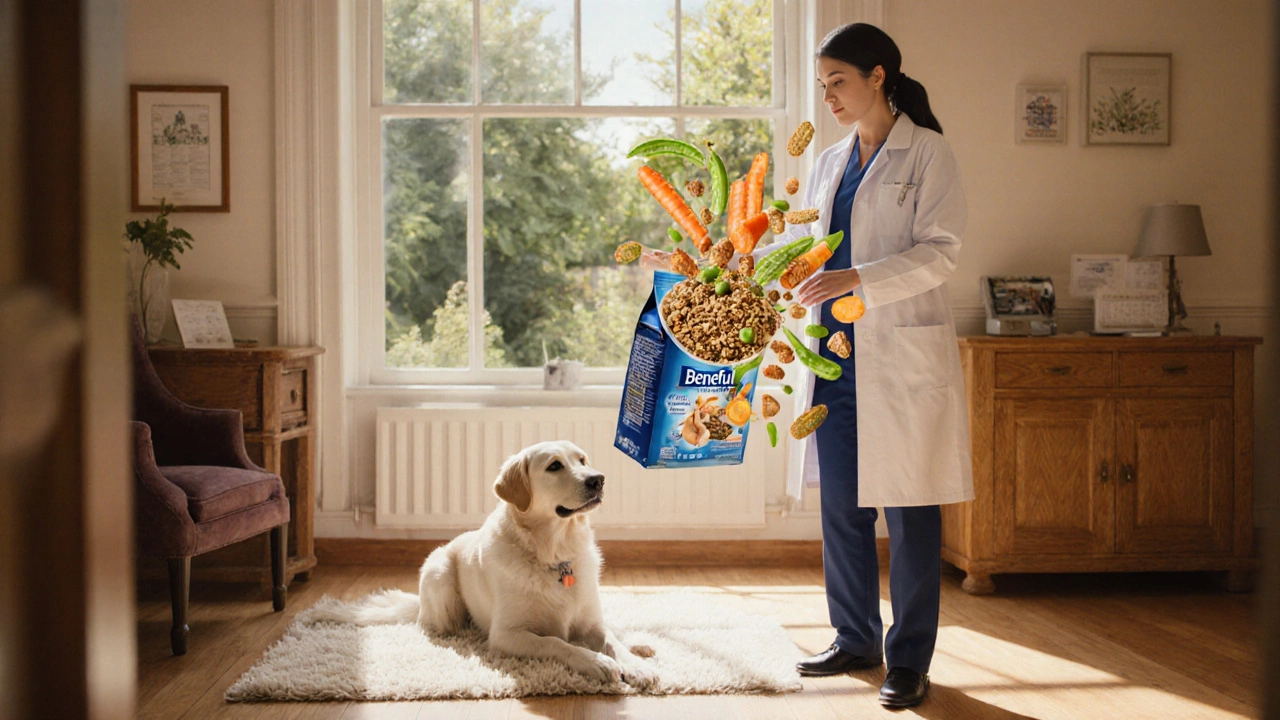Dog Food Nutrition: How to Choose the Right Food for Your Dog
Feeling confused by the endless bags of kibble at the store? You’re not alone. The right food can boost your dog’s energy, coat, and overall health, while the wrong one can cause tummy trouble and weight gain. Below you’ll find the basics you need to make a smart choice, no jargon required.
Key Nutrients Every Dog Needs
Protein is the foundation of any good dog diet. Look for real meat, fish, or poultry listed as the first ingredient. A adult dog usually needs 18‑25% protein, while puppies and active breeds need more, up to 30%.
Fats provide essential fatty acids and keep the coat shiny. Aim for a fat content of 8‑15% for adult dogs. If your dog has a skin condition, omega‑3 sources like fish oil can help.
Carbohydrates aren’t a must, but they give extra energy. Whole grains, sweet potatoes, or peas are better than corn or wheat fillers. Dogs with grain sensitivities should stick to grain‑free options.
Vitamins and minerals come from high‑quality meat and added supplements. Calcium and phosphorus are crucial for bone health; too much or too little can cause problems, especially in growing puppies.
Don’t forget water. Fresh water should always be available, and wet food can add extra hydration for dogs that don’t drink enough.
Reading Labels and Picking Quality Brands
Start by checking the ingredient list. The first three items should be named proteins, not vague terms like “meat meal” or “animal digest.” If you see “by‑product” or “fillers,” move on.
Look for a statement of guaranteed analysis – it tells you the exact percentages of protein, fat, fiber, and moisture. Compare that to your dog’s life stage: puppies need higher protein and fat, seniors need lower calories.
AAFCO (the Association of American Feed Control Officials) approval isn’t a magic badge, but it means the food meets basic nutrient standards. If a brand references a veterinary nutritionist or conducts feeding trials, that’s a good sign they’ve done extra work.
Price can be tempting to use as a shortcut, but the cheapest kibble often cuts corners on ingredient quality. A mid‑range bag that lists real meat first will usually outperform a budget brand with lots of by‑products.
Finally, consider your dog’s specific needs. Large‑breed puppies benefit from formulas that control calcium to protect growth plates. Dogs with allergies may need limited‑ingredient diets, and seniors often appreciate joint‑support additives like glucosamine.
Switch foods gradually over a week – mix a little of the new food with the old each day. This helps avoid digestive upset and lets you see how your dog reacts.
By focusing on real protein, balanced fats, minimal fillers, and a label you can understand, you’ll give your dog a diet that supports a happy, healthy life. Grab a bag that checks these boxes, and watch the difference in energy, coat shine, and overall wellbeing.
What Vets Really Say About Beneful Dog Food
A veterinarian‑focused look at Beneful dog food: ingredient breakdown, AAFCO compliance, health impacts, life‑stage suitability, and practical feeding checklist.
